Bonnets for convict and free women to Australia 1788 - 1868
- Helen Avaient
- Aug 13, 2021
- 4 min read
Roses from the Heart is a project created by Artist Dr Christina Henri as “the first Memorial to all women sentenced to transportation as convicts to Australia. 25,566 cloth bonnets (taken from an 1860s servants bonnet) symbolises the women whose lives have been shrouded by a veil of amnesia for far too long”.
It began back in 2003 when Dr Henri created a moving installation of 900 calico bonnets to represent the babies of convict women that died at the Cascade Female Factory in Hobart.
People from around the world, including school children and women currently in correctional facilities, have made bonnets for the convict women. Sewn into the bonnet is the name of a woman, the ship she was transported on and often the years of her birth and death. There are still around 2,000 bonnets to be made. If you wish to make a bonnet, details are at the end of this article.
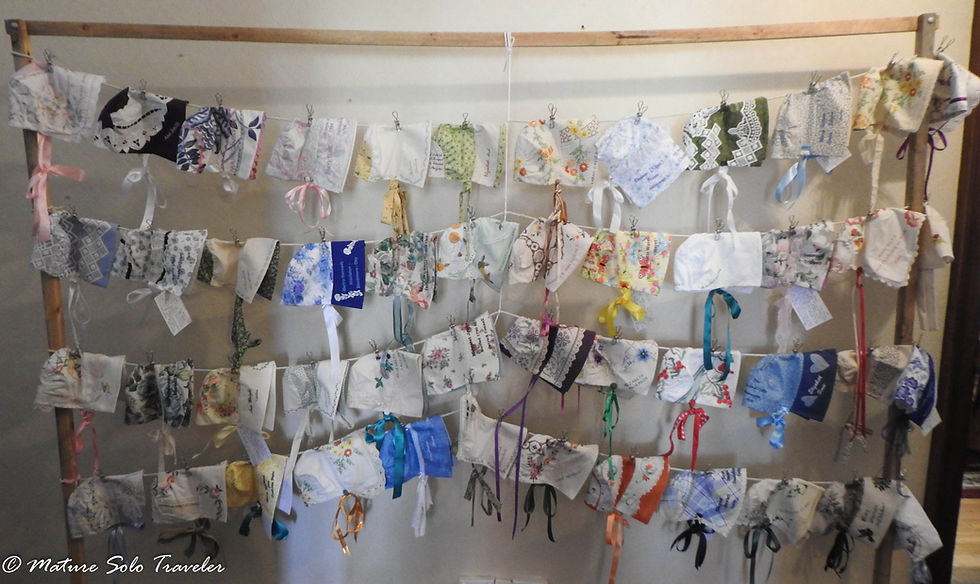
I was fortunate to be able to attend and participate in a Blessing of the Bonnets at Glen Derwent, near Hobart. This two day event brought together a display of bonnets, guest speakers, convict doll auction and LOTS of fellowshipping with others. It was lovely to see people of all ages attending.

The limited edition convict dolls are dressed in an outfit reminiscent of an assigned servant. For those fortunate enough to own a doll, the apron can be embroidered with the name of your convict ancestor.
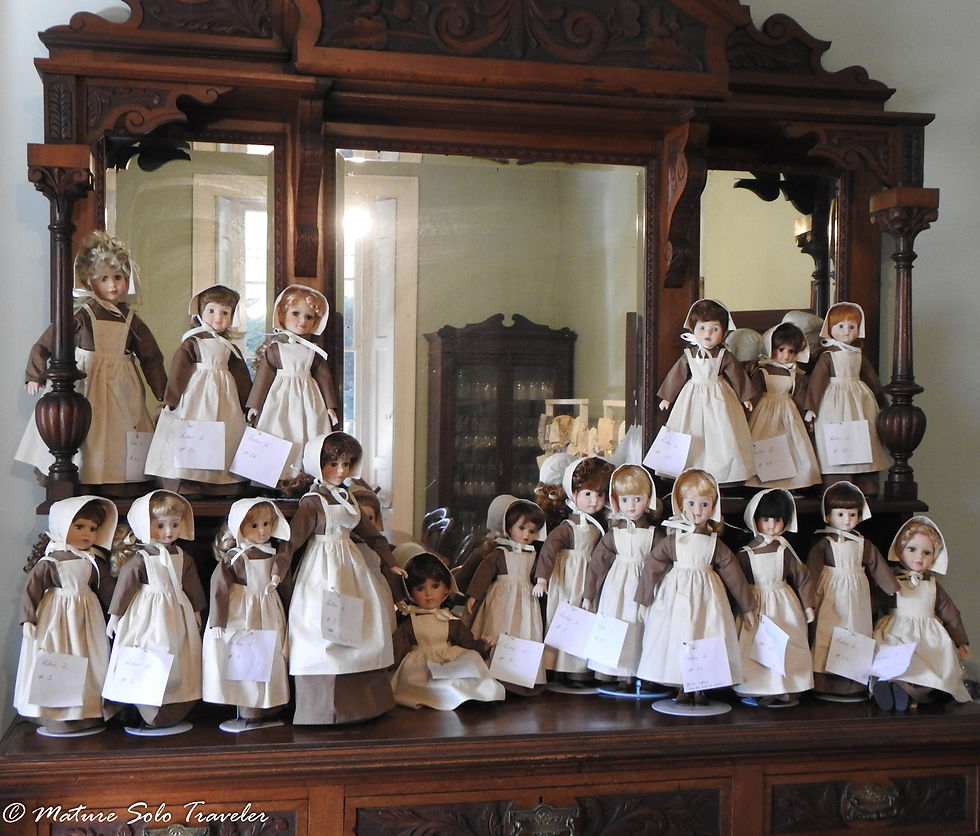
Dr Henri is starting a new project, Irish Roses. The aim is to make a bonnet for each of the assisted women who came to Australia. The women do not have to just be from Ireland. These bonnets are being made out of wedding dresses, as most of the women came to be brides. I met Margie Harris who is looking for old wedding dresses in op shops and has also had some donated to the project. Margie enjoys doing this, she said it was “good fun”.
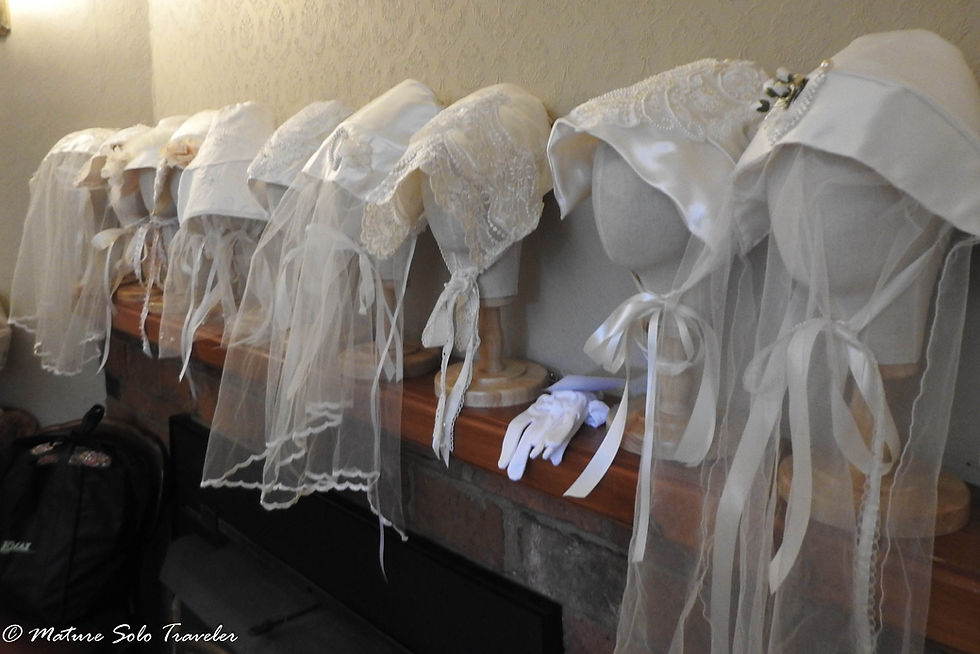
Another amazing woman I met on the day was Lindy McAlister. Lindy is a powerhouse. She has made 102 bonnets to date and has 25 left to make. Lindy laughed, then acknowledged that she enjoys doing it so much that she just might keep making them. Lindy said she didn’t listen to her mother when she was alive, who told stories of having a convict ancestor. Fortunately her mother had written it down in her journals, which Lindy found after she passed. Her ancestor was Alice Wafer, known as Maria, who was transported in 1818 for highway robbery. Maria stole 3 chickens. She was due to hang for this, but her sentence was later commuted to transportation. Lindy said she had great empathy for the women that she makes the bonnets for.
The day was wonderful. It was a marvellous opportunity to see some of the beautiful bonnets on display. Guest speakers who were descended from convict women gave talks from their hearts about their ancestors. There are a lot of gaps in these stories. Often just a name, birth and death date, the ship they sailed on, plus details of their children. These women are often forgotten. It is the aim of these projects to remember them.
One of the greatest parts of the day was meeting and chatting with some of the awesome women who have been making bonnets. They get together on a regular basis at Glen Derwent to sew and chat.
There is a personal connection here as my great-great-great grandmother, Ann Radford, came to Tasmania (Van Diemens Land as it was called then) in 1836 on the Amelia Thompson. Women were scarce in this new land and were offered free passage from England. I always think how brave it was of young 22 year old Ann to travel for six months on a ship to a country that was wild and mainly unknown. She was offered a job as a cook and housekeeper at Strathmore, near Launceston. This is where she met her future husband John Gall. (John had arrived in 1828 from Scotland. He was transported for life, accused of stealing cows.) I was able to wear the bonnet for Ann in the parade.

It is interesting that in the 21st century it is with pride that an Australian can claim a convict ancestor in their family tree. It is estimated that 22% of Australians have a convict in their family tree. Years ago it was a shameful stigma. 30 years ago I asked my Aunty Gwen about our convict history and she was appalled. “There are no criminals in our family!” she emphatically exclaimed.
Both men and women were transported to Australia for often menial crimes. One story I heard on the day was of a young woman who ran away from home. Her father had her charged with stealing the clothes she was wearing! She was convicted and transported to Australia.
Starting with the first fleet in 1788 and ending in 1868 there were over 164,000 convicts sent Down Under. One in seven of these were women, often for crimes of poverty such as stealing bread.
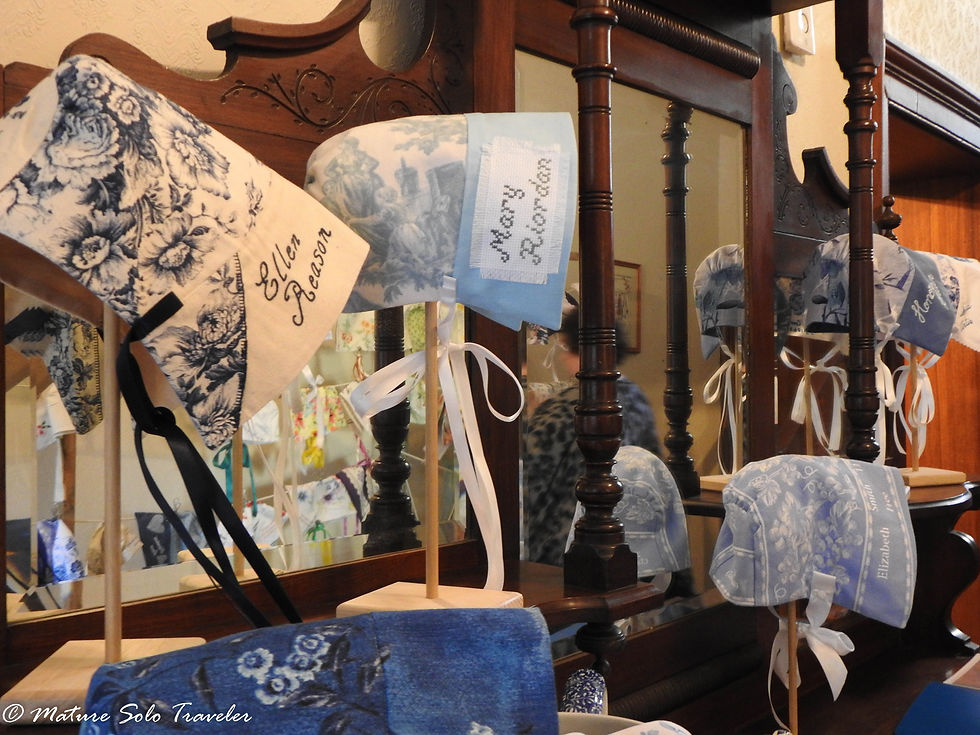
Looking at the bonnets, I wonder how these women lived? Did their lives improve by coming to Australia? What did they think about? Did they miss their birth countries and families? What would they say to us today? I would also thank them for their courage, tenacity, adventurous spirits and fortitude. All the characteristics I also saw in the people who attended the event.

If you wish to make a bonnet for a convict or assisted passenger, contact Dr Christina Henri at cjhenri@gmail.com
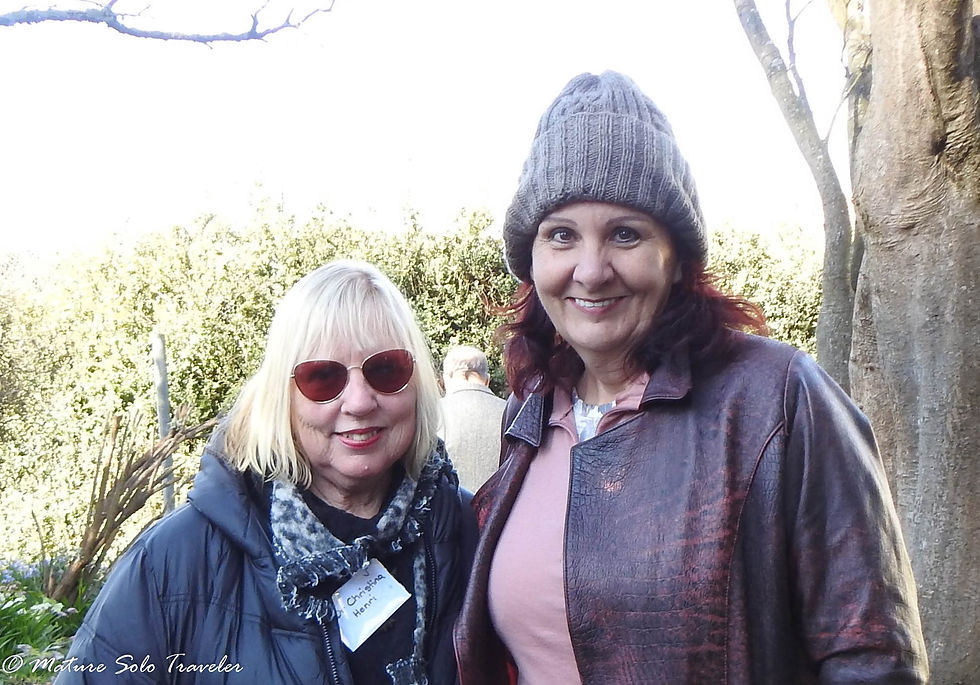
Happy Travels!












Another inspiring story from an adventurous woman. Thanks Helen!